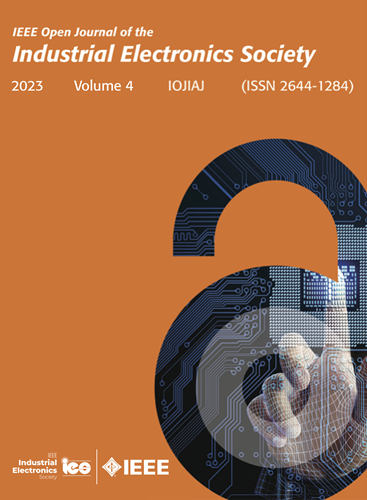电动汽车用五相反凸极容错永磁电机设计与优化
IF 7.2
1区 工程技术
Q1 AUTOMATION & CONTROL SYSTEMS
引用次数: 0
摘要
电感特性为Ld > Lq的五相反凸极容错永磁(FPRSFT-PM)电机具有容错能力好、调速范围宽、无传感器运行能力好等优点,非常适合电动汽车应用。然而,由于实现良好的弱磁能力和明显的反显著特性等多目标性能对电机参数的影响不同,在实现多目标性能的过程中存在约束,对FPRSFT-PM电机的设计过程造成严重干扰。此外,在现有的研究中,仍然缺乏考虑这些不同约束的FPRSFT-PM电机的设计指导。因此,本文首先建立了考虑多目标约束的FPRSFT-PM电机的设计准则和优化。在多目标优化过程中创新性地引入FW比作为新的优化目标,并巧妙地改变新的目标函数,有效地平衡了FW容量和反显著特性的要求。最后,FPRSFT-PM电机的FW容量、反凸极特性和磁阻转矩之间的约束被大大削弱,所有这些性能都能满足设计要求。通过仿真分析和实验测试,验证了所提设计准则和优化的合理性和有效性。本文章由计算机程序翻译,如有差异,请以英文原文为准。
Design and Optimization of a Five-Phase Reverse-Salient Fault-Tolerant Permanent Magnet Motor for Electric Vehicles
Owing to the merits of good fault-tolerant capacity, wide-speed range, and good sensorless operation capacity, a five-phase reverse-salient fault-tolerant permanent magnet (FPRSFT-PM) motor with the inductance characteristics of Ld > Lq is very suitable for the electric vehicle (EV) applications. However, due to the different effects of motor parameters caused by the realization of multiobjective performances such as good flux-weakening (FW) capacity and obvious reverse-salient characteristic, there are constraints in the process of realizing multiobjective performances, which cause serious interference to the design process of the FPRSFT-PM motor. Also, in the existing study, the design guidance for the FPRSFT-PM motor considering these different constraints is still absent. Hence, this article first develops the design criterion and optimization for the FPRSFT-PM motor considering multiobjective constraints. Furthermore, the FW ratio is innovatively introduced in the multiobjective optimization process to act as a new optimization objective and new objective functions are subtly changed, which can effectively balance the requirements of FW capacity and reverse-salient characteristic. Finally, the constraints between the FW capacity, reverse-salient characteristic, and the reluctance torque are greatly weakened, and all these performances of the FPRSFT-PM motor can meet the design requirements. Through simulation analysis and experimental tests, the rationality and validity of the proposed design criterion and optimization are verified.
求助全文
通过发布文献求助,成功后即可免费获取论文全文。
去求助
来源期刊

IEEE Transactions on Industrial Electronics
工程技术-工程:电子与电气
CiteScore
16.80
自引率
9.10%
发文量
1396
审稿时长
6.3 months
期刊介绍:
Journal Name: IEEE Transactions on Industrial Electronics
Publication Frequency: Monthly
Scope:
The scope of IEEE Transactions on Industrial Electronics encompasses the following areas:
Applications of electronics, controls, and communications in industrial and manufacturing systems and processes.
Power electronics and drive control techniques.
System control and signal processing.
Fault detection and diagnosis.
Power systems.
Instrumentation, measurement, and testing.
Modeling and simulation.
Motion control.
Robotics.
Sensors and actuators.
Implementation of neural networks, fuzzy logic, and artificial intelligence in industrial systems.
Factory automation.
Communication and computer networks.
 求助内容:
求助内容: 应助结果提醒方式:
应助结果提醒方式:


